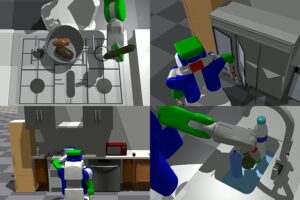
Why don’t more people have robots in their homes? This is an unexpectedly complicated question, just as our homes are unexpectedly complicated places. The relative simplicity of navigating a structured environment is a major contributor to the success that autonomous systems are having on manufacturing and warehouse floors early.
MIT develops home robot, once the initial mapping has been completed, there is typically very little room for modification in most systems. This is despite the fact that the majority of systems still need that an area be mapped before they will begin functioning.
On the other hand, homes tend to be something of a nightmare. They are not only extremely different from one unit to the next, but they are also packed with unpleasant impediments and have a tendency to be fairly dynamic, as furniture is moved around or other objects are left on the floor MIT develops home robot. Even after being on the market for several decades, improvements are continually being made to vacuum cleaners, which are the most common type of home robot.
PIGINet (Plans, Images, Goal, and Initial facts) is being demonstrated by researchers at the CSAIL at MIT this week. This system is intended to provide task and motion planning to home robotic systems. The neural network is supposed to help streamline their capacity to build plans of action in a variety of contexts by providing feedback and suggestions.
PIGINet is described as follows by MIT:
[It] makes use of a transformer encoder, a model that is both flexible and up to date that is intended to function on data sequences. In this particular scenario, the input sequence is comprised of information regarding the job plan it is considering, photographs of the surroundings, and symbolic encodings of the initial state and the desired aim. The encoder will generate a prediction regarding the practicability of the selected work plan by combining the image with the text and the task plans.
At this point in time, the system places a significant emphasis on endeavors that take place in kitchens. It does this by drawing on simulated home surroundings to develop designs that involve interactions with many distinct aspects of the environment. These elements include things like counters, cabinets, the refrigerator, sinks, and so on. According to the findings of the study, the use of PIGINet was able to save the amount of time spent planning by approximately 80 percent in situations that were relatively straightforward. In circumstances with a higher degree of complexity, that percentage was often between 20 and 50%.
Read Also;AI robots tell UN conference they could run the world
The group believes that the houses are only the beginning.
According to Zhutian Yang, a PhD student, the practical applications of PIGINet are not limited to use in families. “Our future goal is to further develop PIGINet to recommend other task plans after recognizing infeasible activities. This would further speed up the generation of feasible task plans without the requirement for large datasets for training a general-purpose planner from scratch. We think that this might completely change the way that robots are programmed throughout the development stage and then how they are used in people’s homes afterward.
Follow our socials Whatsapp, Facebook, Instagram, Twitter, and Google News.








